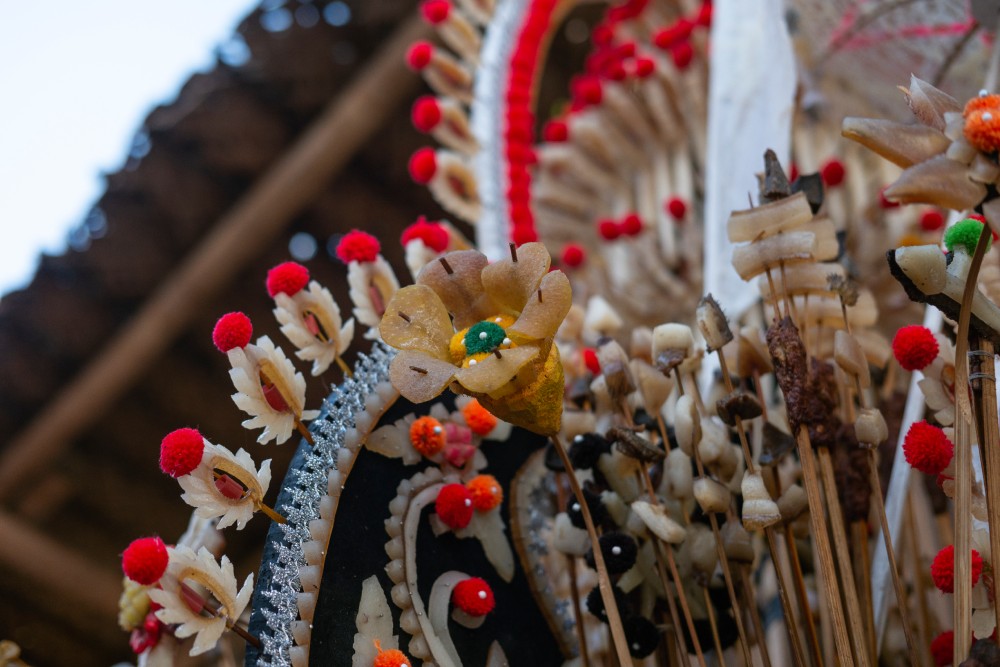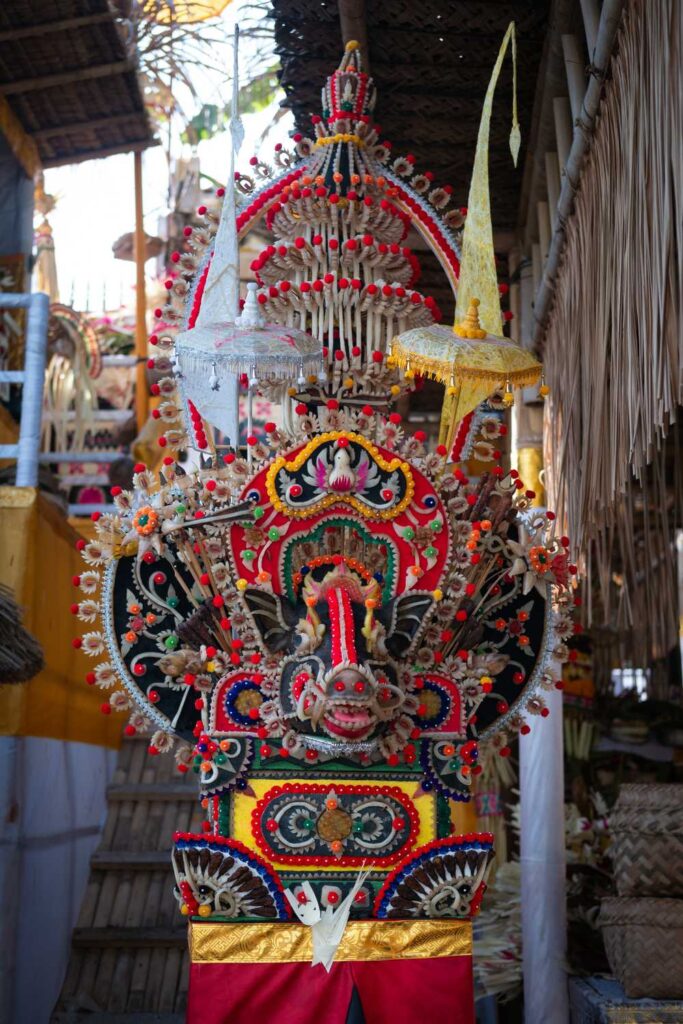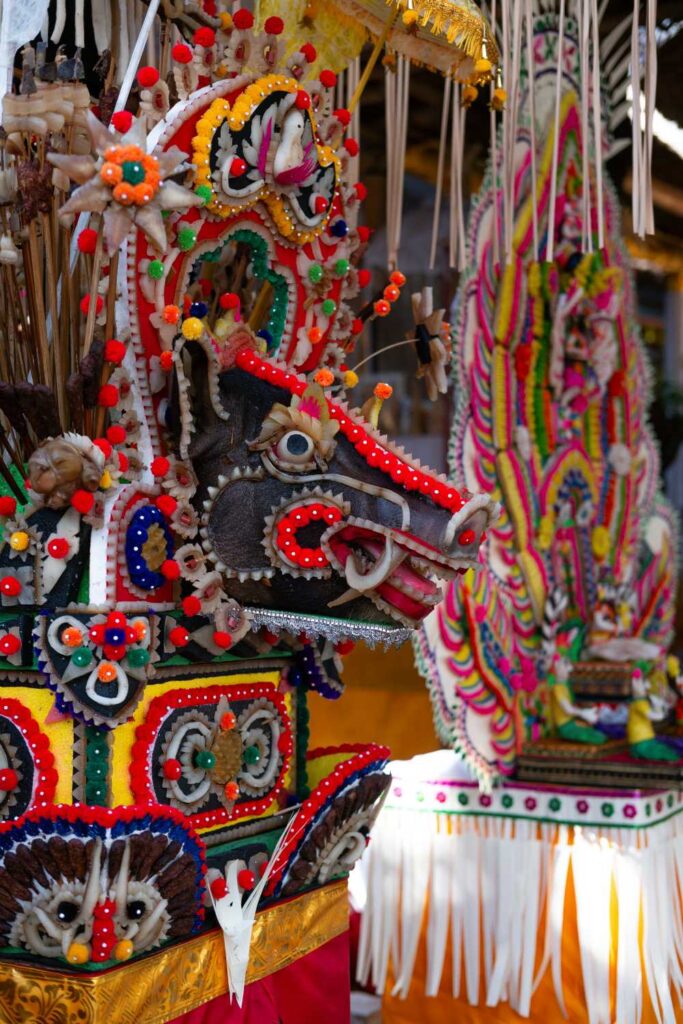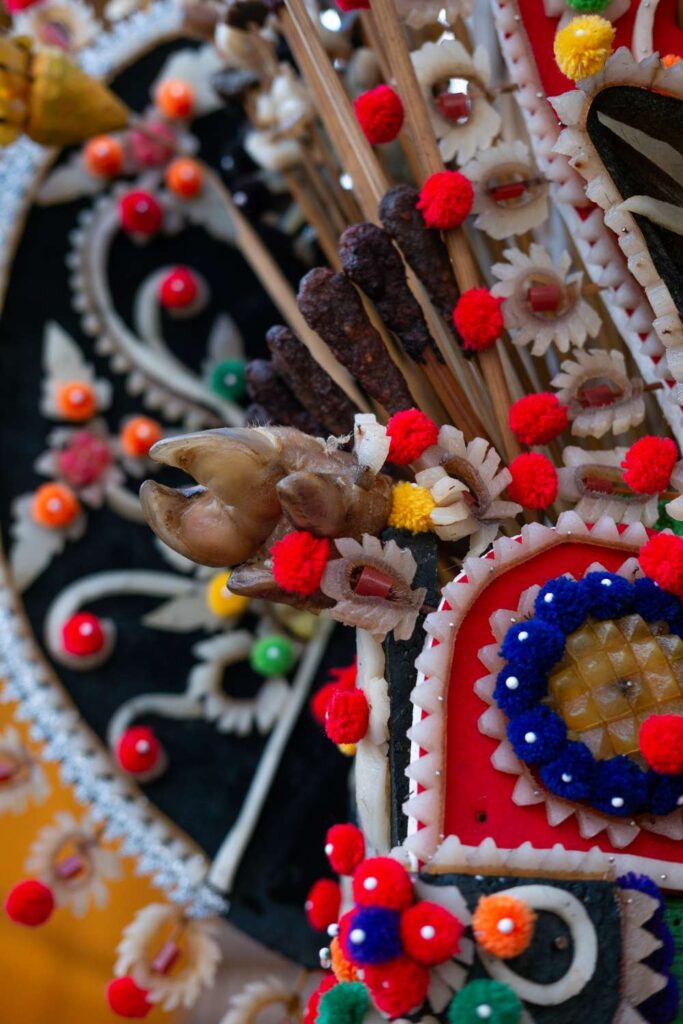
Simultaneously unsightly and visually impressive, gayah are intricately-prepared offerings fashioned out of the meat, skin and parts of butchered pigs.
Bali’s humid and tropical heat is certainly not the ideal condition for animal remains to be sweltering under the sun, but during major ceremonies, like funerals or odalan temple anniversaries, these gayah are necessary among the eclectic assortment of offerings provided for the gods and ancestors.
In particular, gayah serve the function of placating or neutralising negative forces, offerings for the bhuta kala, the earthly and demonic elements believed to cause disturbances when not appeased. As such they are necessary in the mecaru ritual, the cleansing of this negative energy (tamas), ensuring balance among the forces.
Pork, said to be symbolic of negativity, are apt ‘mediums’ for such an offering. The pig’s are ritually sacrificed, butchered, the parts are boiled and then rearranged into an elaborate display —a kind of abstract taxidermy. Despite their somewhat grotesque form, gayah are still testaments to the Balinese creativity. The white pork fat and skin are fashioned into shapes and flowers and patterns, the pig’s hooves positioned artistically, whilst long skewers, or sate gayah, fan out symmetrically from the central body.



There are different categories of gayah. The simplest being the gayah sari, with meat skewers sticking out of a coconut base; then there is the gayah utuh, where the pig’s head makes for the base foundation, adorned by skewers. The most impressive of them all is the gayah agung, used in major ceremonies, with different components coming together to create an almost 4-foot structure.
Much like a sarad offering, a dioramic mosaic moulded out of coloured rice cakes, the structure of the gayah is cosmologically important. It features three different levels, symbolising the three different worlds of the universe: Bhur Loka, the underworld; Bwah Loka, the human realm; and Swah Loka, the divine or heavenly realm. What’s more, the skewers, or sate, are also uniquely symbolic, some fashioned into to represent the nine weapons of the Nawasanga Gods (nine cardinal directions), sate pengideran. Others symbolise very specific elements like the sate kuung tunggal (fertility), sate bingin (greatness), sate cepaka (beauty), sate lawangan (doorways/transition).
So, if you smell something funny in the corner of a temple, it is likely the slowly decaying gayah offering. But pay it the respect it deserves, as without it we could not appease the niskala unseen forces of the bhuta kala, and we could not achieve harmony and balance between the positive and negative forces.










